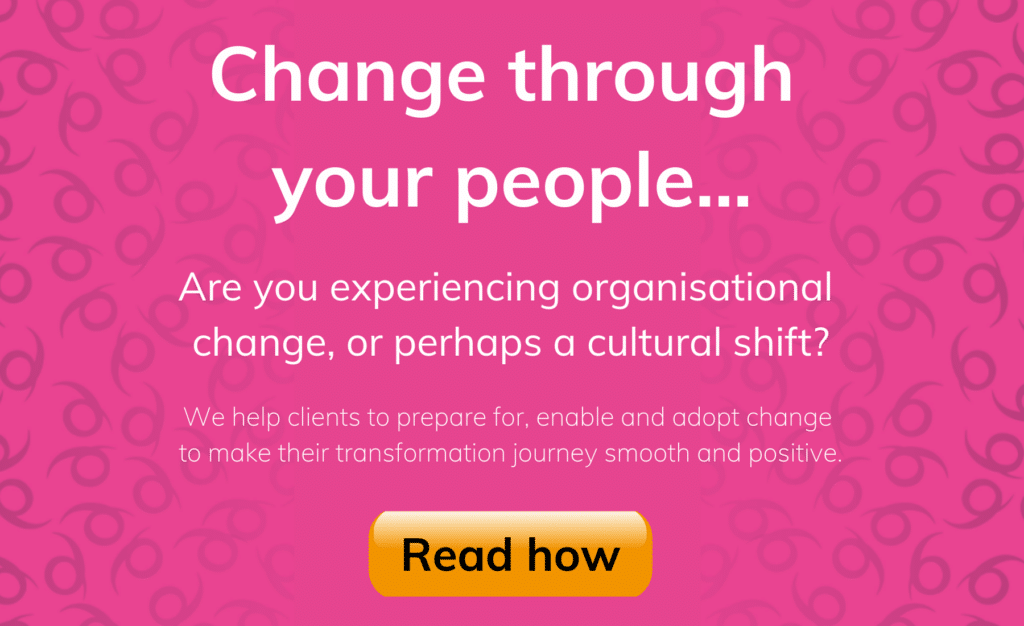One of the main reasons for project failure is that change management has not been adequately addressed. In fact, a staggering 70% of major change projects fail to deliver forecasted benefits (McKinsey).
Here are our top tips for getting your business ready for change:
1. Be clear on the scope of change required from the start
Understand what needs to stay the same and what specifically is changing. Clarifying the current (“As Is”) and future (“To Be”) states can help in identifying where the biggest changes lie.
2. Establish who is doing what
Ensure you have a dedicated change team set up for designing and implementing this change. Be clear on the purpose of each role and how the team needs to work collaboratively. Processes or governance need to be agreed and in place to ensure effective communication across the change team and the business.
3. Consider the appetite and capacity for change
Individuals involved in the change team may have to do other business as usual activities on top of the change. It is important that they understand the expectation for what they need to deliver and are committed to supporting the change. Often individuals already feel stretched in their role to actively engage in change activities so it’s crucial to consider how this burden can be lessened e.g arranging temporary arrangements to complete their operational tasks.
4. Strong engagement from the start
Leading from the top can help people accept the change more readily. Leaders tend to start by explaining strategic objectives and what the benefits of the change will be. In order to ensure your business is ready for change, all stakeholders should have a clear understanding of the change i.e. What is the change? Why is it needed? What’s wrong with the way things are now? How much and how fast does the organisation need to change? It’s imperative that engagement occurs throughout the process – there won’t always be ground-breaking pieces of information to share, but individuals will feel out of the loop if they haven’t been engaged with and brought along the change journey.

5. Ensure two-way communication and engagement is prioritised
Engagements need to be two way for all individuals to have the chance to challenge the changes happening and voice their concerns – if this is missed these thoughts and feelings can amplify and create unnecessary resistance. People want to feel listened to, so it’s valuable to invest time to create opportunities for open dialogue. This investment will also allow you to tell the story of the change journey and allow it to resonate with everyone involved.
6. Case by case change
When any change occurs, people want to know how it will affect them specifically. Be prepared to get personal! So, what’s in it for me? Will I win or lose? Will I have to learn new skills? How much will my job change? Do I have the capability to do this? Questions should be encouraged as they increase understanding and help people to accept – and possibly embrace – the change.
7. Be flexible with your approach
The more complex the change you are implementing, the less you will able to predict what will happen. It is important to be flexible when approaching change, as situations can shift rapidly. Don’t be too rigid in your attitude and ensure you are open to new ways of doing things as time progresses – change should be viewed as a continual experiment of what works and what doesn’t as no organisation is the same.
8. Avoid false optimism
Allow people to voice concerns if they aren’t feeling confident about the change. Don’t be blindly positive as it can result in stakeholders closing off communication with the change team. People aren’t stupid and can see when things aren’t going well. Honesty is the best policy!
9. Talk about shifting mindsets (not just behaviour)
Change can be viewed as learning a new set of skills or changing behavioural norms, but effective change that sticks requires a shift in mindset – encouraging this in your staff will ensure your organisation is ready for change. Gather tools such as stories, data or create lessons learnt materials to help everyone understand the mind shift that is required to implement change.
It is important to bear in mind when evaluating if your business is ready for change that it takes time. It won’t happen overnight. In our current climate, organisations can be impatient and eager to implement the newest technology or most efficient process, but you must bring your people along with you and ensure that they are fully engaged. Change will not always go to ‘plan’ but if you can ensure buy-in using these 9 tips it will bring you closer to getting your business ready to implement change effectively. For more information about change management please contact Tiggy Robinson tiggyr@ninefeettall.com.

